I was trying to do something like auto-increment in Oracle 11g Express and SQL Developer. I know very little about Oracle and I am also new to triggers.
I tried running this, but I don't know how to do it properly.
CREATE TABLE theschema.thetable
(id NUMBER PRIMARY KEY,
name VARCHAR2(30));
CREATE SEQUENCE theschema.test1_sequence
START WITH 1
INCREMENT BY 1;
create or replace trigger insert_nums
before insert on theschema.thetable
for each row
begin
select test1_sequence.nextval into :new.id from dual;
end;
/
When I try to create the trigger, I get a screen which asks me for some "binds". The dialog box has only one check box "null". What does this mean and how do I make a script that works properly?
Any precautions to take while doing this kind of "auto-increment" ?
